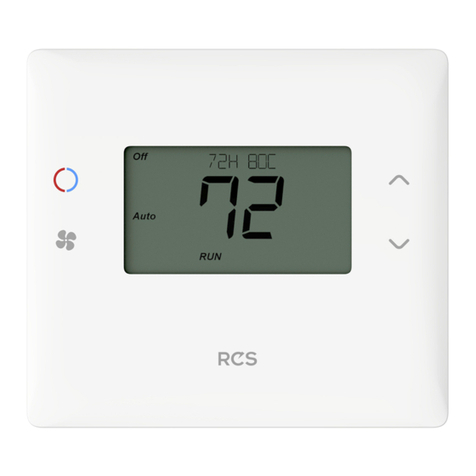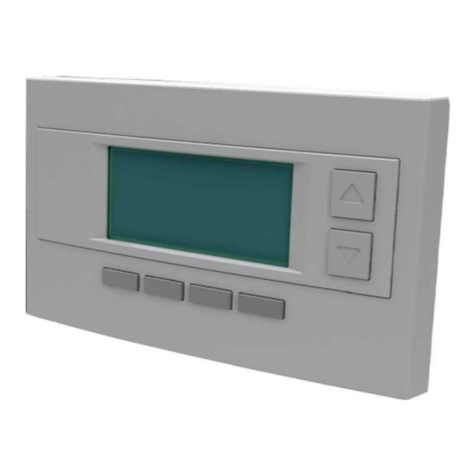DCN: 140-02034-03 Page 3
thermostat connects to help determine this. If the original system had an orange wire
connected to an “O” terminal, then you have a “changeover with cool” system. If you have
a brown wire connected to the “B” terminal, then you have a “change over with heat”
system.
Installer Settings Menu items
Display Lock Range: Y or N Default: N
Y = Display LOCKED
N = Display unlocked
Allows you to lock or unlock the thermostat buttons. When the buttons are locked, you can
still access the main menu, but you will not be allowed to select any menu options. The
Installer Settings hidden button operation is always operational, allowing you to return to
this screen and turn Display Lock off.
Service Mode
Test Mode Range: Y or N Default: N
Y= Test mode on. Reduces all delays to 10 sec for quicker system testing
N= Test mode off. Normal system delays
CAUTION: in test mode all system safety delays are shorten. Do not operate the
system compressor in test mode. Disconnect Y1 or Y2 outputs if using test mode
on a live system.
System Settings Submenu: Sets the HVAC operational settings below
Mechanical Settings Submenu: Sets HVAC system type and configuration
Type Range: Gas/Elec or Heat pump Default: Gas/Elec
Selects HVAC type, Gas/Electric or Heat pump
Fan Type Range: Gas or Elec Default: Gas
Selects the Fan type if system is Gas or Electric
C/O Type Range: w/Cool or w/Heat Default: w/Cool
Selects the Heat Pump Changeover Valve type
2nd Stage Heat Range: Y or N Default: N
Enables the 2nd Stage Heat operation
Aux Heat (HP) Range: Y or N Default: Y
Enables the Auxiliary Heat operation. Typically the Aux Heat will be heat-strips in a Heat
Pump system
2nd Stage Cool Range: Y or N Default: N
Enables the 2nd Stage Cool operation
Delta Settings : The Delta T Setting is the delta, or difference between, the setpoint and
current temp for determining when a heat or cool call comes on. The “delta” is the number
of degrees away from setpoint.
H/C Delta Range: 3 - 15 degrees. Default: 3F (1C)
Sets the minimum separation between heating and cooling setpoints. Attempts to lower
the cooling below the heating setpoint by this amount will PUSH the heating setpoint down
to maintain this separation. Same for setting the heating setpoint above the cooling
setpoint, it will PUSH the cooling setpoint up to maintain this separation.





























